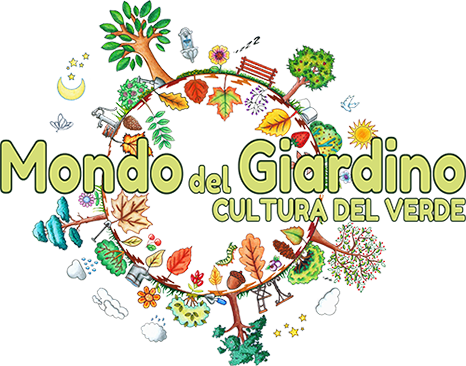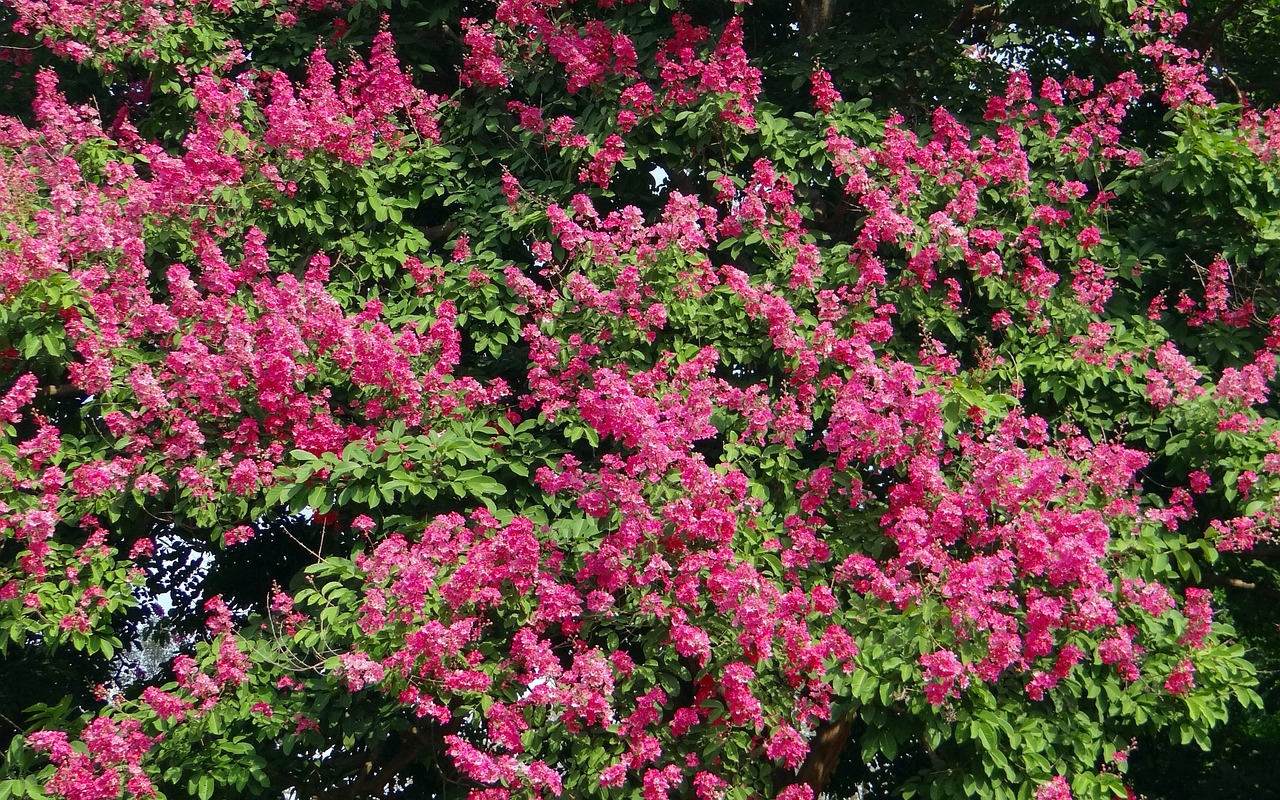IDENTIFICATION
Scientific name:
Lagerstroemia indica
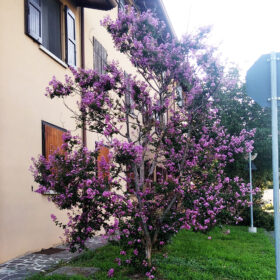
Italian common name:
Crape myrtle
Family:
Lythraceae
Origin:
south east Asia
Environment:
also present spontaneously in Java, Laos, Thailand, Vietnam, Cambodia and the Andaman Islands
Evergreen or deciduous:
deciduous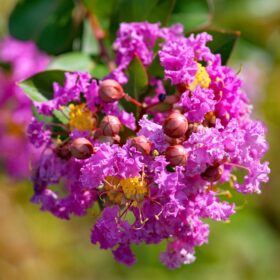
Toxicity:
not
PLANT RECOGNITION
Height:
4 m.
Width (extension):
4 m.
Habit:
Small tree or shrub with wide, rounded foliage that is not too dense.
Leaf:
alternate, elliptical, oval, elongated leaves, dark green in colour, which become orange in autumn, before falling.
Flower:
15/20 cm long bunches made up of numerous small flowers. The color ranges from white to scarlet red depending on the variety and species.
Flowering: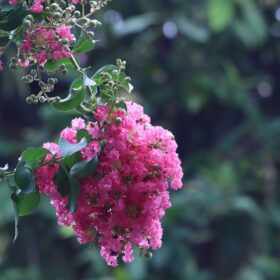
Summer. It flowers on the branches of the year.
Fruit:
The fruit is a rounded capsule, which opens when ripe.
Trunk:
very smooth, gray in color which peels off showing the beige trunk underneath with a very decorative effect.
Property:
no healing properties. It is used for pure ornamental value.
Parfume: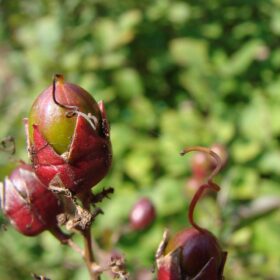
not
NEED
Maintenance:
low if the plant is left in the wild, medium if regular pruning is performed.
Light Exposure:
Sun, partial shade
Soil type:
clayey or calcareous, rich and with a good texture
Soil acidity:
moderately acidic to neutral
Italian climatic area:
It can be planted in practically every area of Italy with the exception of excessively cold mountain areas
Need for water: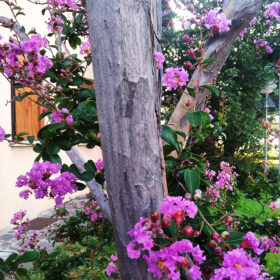
In the soil when young it should be watered every 2 weeks and at maturity regular rains are enough. In pots it will need to be watered regularly without stagnation in the saucer.
Propagation:
by seed – collected at the end of summer and sown in autumn – by woody cutting taken in summer or by layering.
Pruning:
As it grows, growth pruning must be done, which you need to know how to do. Flowering on the branches of the year, on the adult plant, it must be carried out at the end of the frosts, that is, at the end of February of approximately ¾ of the length of the branch. For how to prune the plants in your garden you can read the dedicated articles here
Diseases:
powdery mildew, red spider mite and aphids.
PARTICULARITY 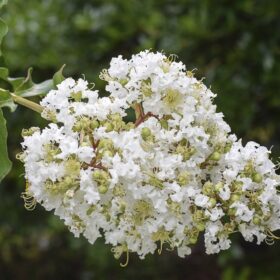
From China, where it came for ornamental use, Magnus Von Lagerstroem, director of the East India Company, noticed the plant in India in 1759 and sent it as a specimen to Linnaeus for classification even though he was not sure that it was a new species.
Unfortunately in the meantime he died without knowing that he had been right. Linnaeus, in honor of the discoverer, called it Lagerstroemia indica.
Known as crape myrtle due to the curled edges of the flowers.
Annotations
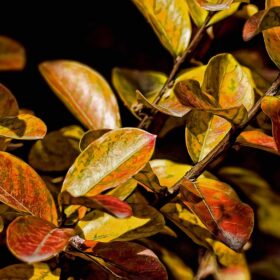
It is a slow growing plant.
It resists frost down to -15°
It is visited by bees for pollen and nectar
It has a thin root system that never damages buildings or the road surface.
A nitrogen-based fertilizer that is not rich but slow-release is recommended to help the blooms as well as the leaves.
Due to its not very dense foliage and its characteristics it is used for bonsai.
In the kitchen:
no use.
THE MONDO DEL GIARDINO ADVICE
Lagerstroemia indica has such a particular trunk that it adorns the garden even in the absence of leaves and flowers. The best way to enjoy it is to let it grow as a shrub which is its natural form.
You can find a complete collection here
Now on horseback! Work awaits us! Our new wonderful outdoor space is about to be born!
GOOD WORK and…if you have any questions, write to info@ilmondodelgiardino.com
Image sources: thanks to Pixabay and many thanks to Davies Designs for the social photo, Bishnu Sarangi for the cover photo, darkness_s, hartono subagio, Martin LaBar, Davies Designs, Sergio Cerrato – Italia and For commercial use, some photos need attention closing.
